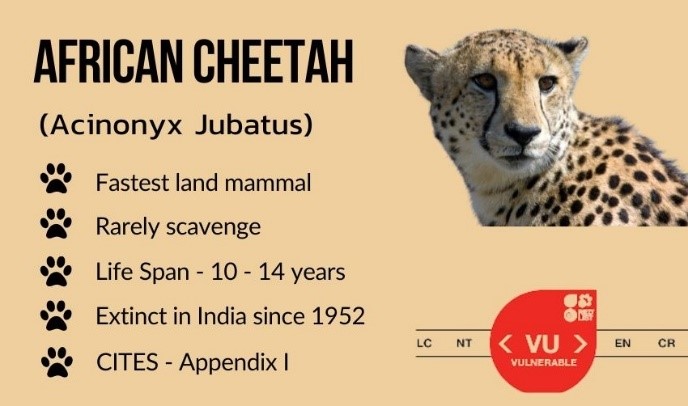7667766266
enquiry@shankarias.in
Seventy years after being extinct from India, world's fastest land animal Cheetahs walk on the Indian ground once again.
Cheetah
- Scientific name- Acinonyx jubatus
- The planet’s fastest land animal
- The least dangerous big cat
- Population- Around 7,100 cheetahs left in the wild
- IUCN Status- Vulnerable
- Appendix I of the Convention on International Trade in Endangered Species of Wild Fauna and Flora (CITES)

References
Quick facts